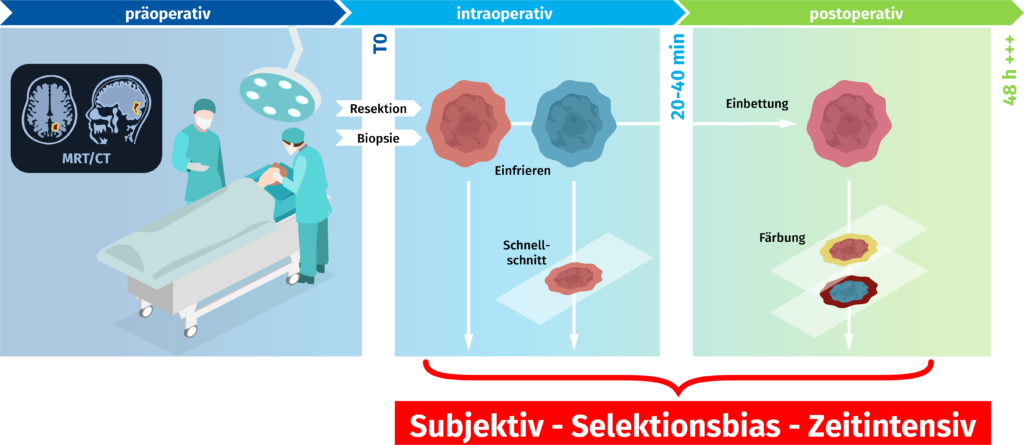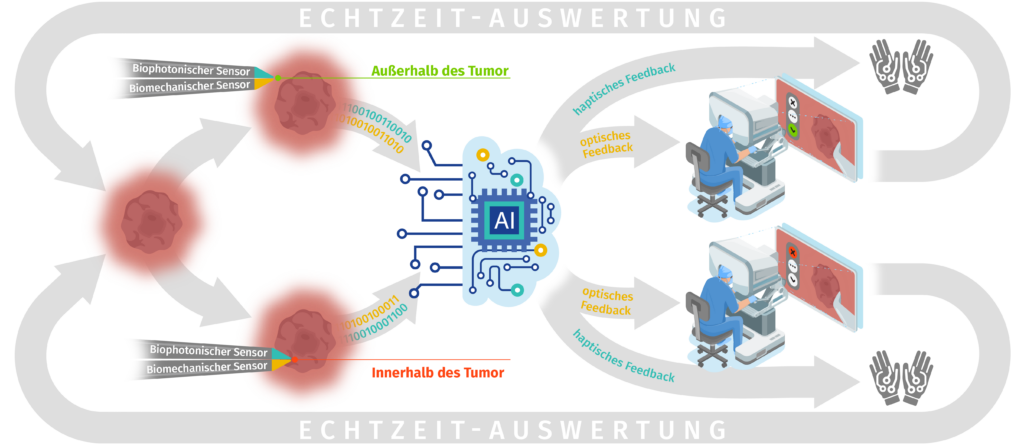Sensorised surgery
The surgical removal of tumours is one of the pillars of cancer therapy. Well-established imaging procedures provide the exact location and size of the tumour for planning the operation. The aim of the operation is then to completely remove the cancerous tissue while sparing the surrounding healthy tissue as much as possible. Endoscopic and microscopic images of the surgical site as well as robotic and navigation systems support the surgeons’ experience. However, tumours are sometimes not completely removed because the tissue boundaries are not clearly shown in this way. This results in a poorer chance of survival for patients.

The interdisciplinary project team at Jena University Hospital, Friedrich Schiller University Jena and Ilmenau University of Technology therefore wants to develop a sensor-based support system for tumour surgery that can continuously map these boundaries and communicate them haptically. This involves the use of multimodal marker-free imaging combined with artificial intelligence (AI)-based real-time analysis, by means of which the current tumour boundary is continuously recorded in the surgical site. This is visualised and communicated haptically to the surgeons so that the information can be used directly for decision-making. This would represent a breakthrough towards precise, personalised surgery with maximum protection of healthy tissue.

The project is funded by the “CZS Breakthroughs” (Life Science Technologies) program of the Carl Zeiss Foundation.
